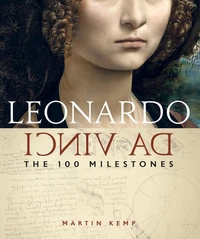The science of art. Optical themes in Western art from Brunelleschi to Seurat
Par :Formats :
- Paiement en ligne :
- Livraison à domicile ou en point Mondial Relay indisponible
- Retrait Click and Collect en magasin gratuit
- Réservation en ligne avec paiement en magasin :
- Indisponible pour réserver et payer en magasin
- Nombre de pages374
- PrésentationBroché
- Poids1.83 kg
- Dimensions25,5 cm × 28,3 cm × 3,0 cm
- ISBN0-300-05241-3
- EAN9780300052411
- Date de parution01/01/1990
- ÉditeurYale University Press
Résumé
For almost five hundred years the central goal of European painting was the imitation of nature. Many artists and theorists, believing that imitation must be based on scientific principles, found inspiration or guidance in two branches of optics - the geometrical science of perspective and the physical science of colour. In this pathbreaking and highly illustrated book Martin Kemp examines the major optically orientated examples of artistic theory and practice from the Renaissance to the nineteenth century. Kemp begins by discussing the invention of perspective by Filippo Brunelleschi and its exploitation by such artist-theorists as Piero della Francesca, Leonardo and Dürer. He traces the further production of theoretical texts on vision and the increasingly complex relationship between theory and practice in works by such masters as Velazquez, Rubens, Poussin and Turner. Kemp then describes the production and use of a variety of mechanical and optical devices, including perspective machines and camera obscures, that led toward the invention of photography. He also examines the rival perceptual theories of such men as Ruskin and Helmholtz that began to erode the geometrical certainties of perspective. Next, in a discussion of colour theory, Kemp shows that attempts to exploit colour science in painting reflect two main traditions initiated by Aristotle and Newton. According to Kemp, the Aristotelian tradition influenced the painters' theory of the three primary colours - yellow, red, and blue - while Newton's prismatic theory eventually provided fertile ground for a series of painters that included Runge, Turner and Seurat. This monumental work not only adds to out understanding of a large group of individual works of art but also provides valuable information for all those interested in the interaction between science and art.
For almost five hundred years the central goal of European painting was the imitation of nature. Many artists and theorists, believing that imitation must be based on scientific principles, found inspiration or guidance in two branches of optics - the geometrical science of perspective and the physical science of colour. In this pathbreaking and highly illustrated book Martin Kemp examines the major optically orientated examples of artistic theory and practice from the Renaissance to the nineteenth century. Kemp begins by discussing the invention of perspective by Filippo Brunelleschi and its exploitation by such artist-theorists as Piero della Francesca, Leonardo and Dürer. He traces the further production of theoretical texts on vision and the increasingly complex relationship between theory and practice in works by such masters as Velazquez, Rubens, Poussin and Turner. Kemp then describes the production and use of a variety of mechanical and optical devices, including perspective machines and camera obscures, that led toward the invention of photography. He also examines the rival perceptual theories of such men as Ruskin and Helmholtz that began to erode the geometrical certainties of perspective. Next, in a discussion of colour theory, Kemp shows that attempts to exploit colour science in painting reflect two main traditions initiated by Aristotle and Newton. According to Kemp, the Aristotelian tradition influenced the painters' theory of the three primary colours - yellow, red, and blue - while Newton's prismatic theory eventually provided fertile ground for a series of painters that included Runge, Turner and Seurat. This monumental work not only adds to out understanding of a large group of individual works of art but also provides valuable information for all those interested in the interaction between science and art.









